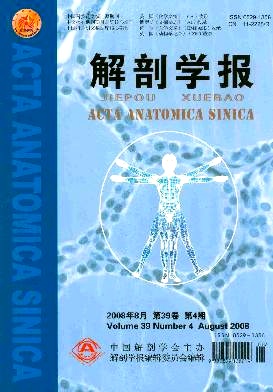|
|
Effect of heroin withdrawl and relapse on expression of 5-HT,gastrin,somatostatin immunoreactive cells in duodenum of rats
2010, 41 (6):
880-884.
doi: 10.3969/j.issn.0529-1356.2010.06.021
Objective To study the changes of expression of 5-hydroxy tryptamine(5-HT), gastrin(Gas) and somatostatin(SS) in rat duodenum during heroin abstinence and relapse period for investigating the effects of the possible functions of 5-HT, Gas, SS in duodenum during heroin abstinence and relapse. Methods Thirty-five SD adult male rats were randomly divided into three groups: normal control group (NCG), saline control group (SCG) and experiment group (EG). Experiment group was divided into: heroin abstinence group(HAG), methadone detoxication group(MDG) and heroin relapse group(HRG). Duodenal tissues were obtained from three groups(NCG,SCG,EG) separately. Immunohistochemical SABC method was adopted, cell counting and image analysis were used in the research. Results Compared with NCG and SCG, the number of 5-HT,Gas,SS immunoreactive cells increased (EM>P/EM><0.05),the results of image analysis showed that the mean grey degree of 5-HT, Gas, SS immunoreactive cells decreased obviously in HAG and HRG (EM>P/EM><0.05). Compared with NCG and SCG, there were no statistical significances on the 5-HT,Gas,SS immunoreactive cells counting (EM>P/EM>﹥0.05) in MDG. Conclusion In HAG and HRG, 5-HT, Gas, SSimmunoreaction intensity and the number of cells increased obviously in rats duodenum, suggesting that 5-HT, Gas, SS participate in the process of adjusting during HAG and HRG. After detoxication of methadone, the expression of 5-HT, Gas, SS was close to normal, suggesting that the changes of expression of 5-HT, Gas, SS were reversible.
Related Articles |
Metrics
|


